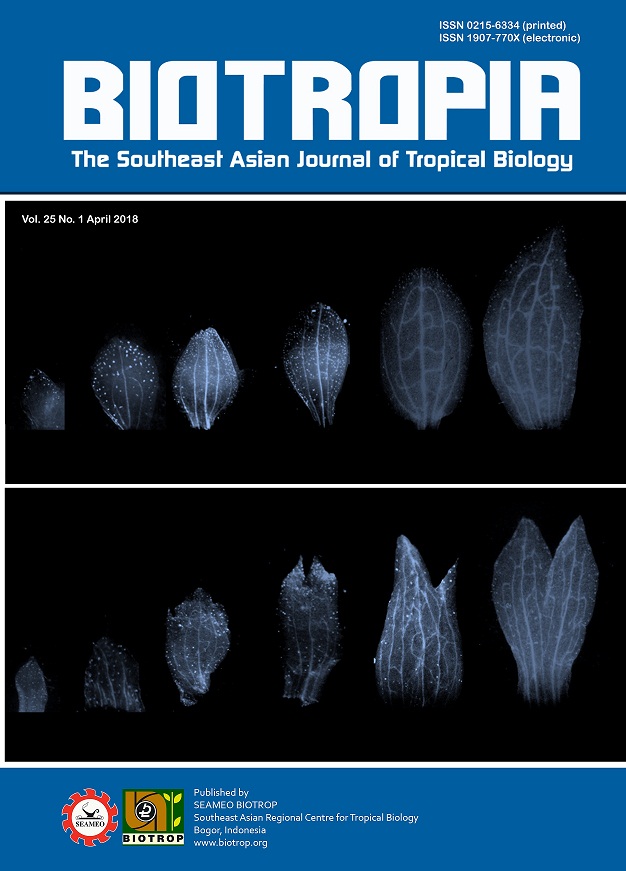
Tags
ISOLATING MICROSATELLITE FROM Amorphophallus variabilis AND ITS APPLICATION FOR POPULATION STUDY IN DRAMAGA CONSERVATION FOREST, INDONESIA
Content Language : English

Amorphophallus variabilis Blume, a member of Araceae, is a fleshy perennial tuber crop endemic in Java Island, Indonesia. The plant produces white edible corm; and it was used as food during famine time before 1960s. Rapid ecological changes and land fragmentations in Java in recent times threaten populations of A. variabilis. Here, compound microsatellite markers were developed in order to develop conservation strategies in the populations. Twelve primers pairs produced high polymorphism ranging from 5 to 22 alleles per locus. The observed and expected heterozygosities ranged from 0.191 to 0.851 and 0.380 to 0.943, respectively. This high allelic diversity indicates that these markers are suitable for the study on population genetic structure. Cross-amplification on related and non-related species was performed. Application of the markers on populations from Dramaga Conservation Forest revealed high allelic richness, high diversity within and among populations. Genetic distance among populations increased with an increase of geographic distance. Present study suggested that, it is important to study population of A. variabilis in Java in order to understand the population genetic structure and develop effective in situ conservation programs.
Link

This work is licensed under a Creative Commons Attribution-NonCommercial-NoDerivatives 4.0 International License.
